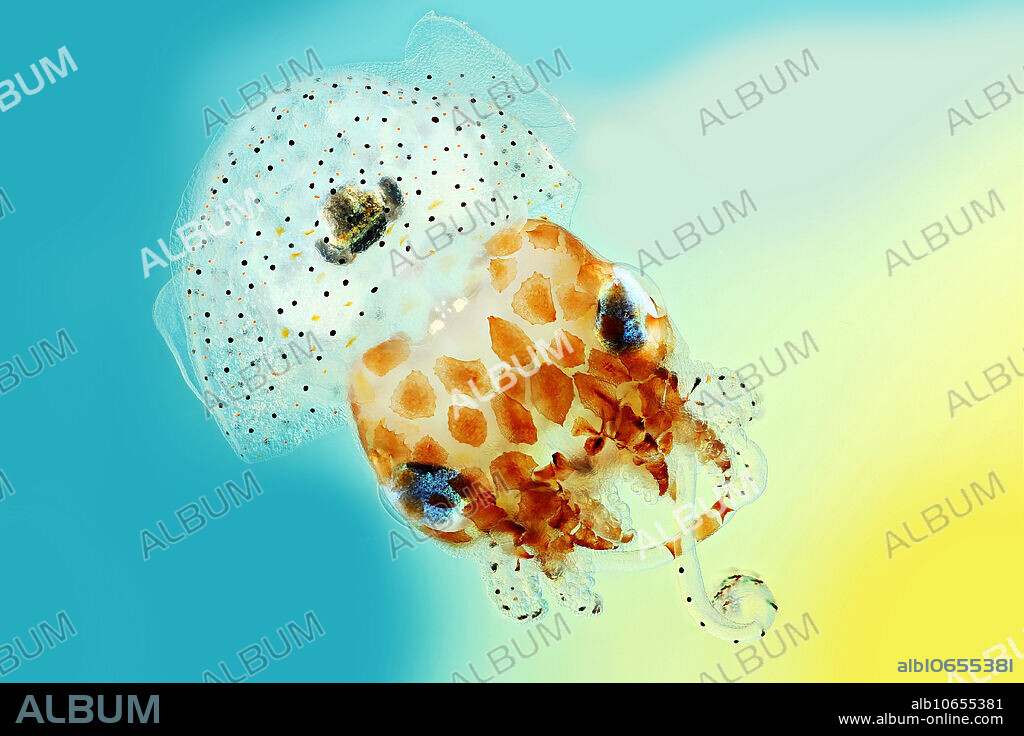alb10655381
Juvenile Hawaiian bobtail squid

|
Add to another lightbox |
|
Add to another lightbox |



Title:
Juvenile Hawaiian bobtail squid
Caption:
Juvenile Hawaiian bobtail squid, Euprymna scolopes. The squid forms a symbiosis with the bioluminescent bacterium Vibrio fischeri. The light organ (centre) is part of the ink sac-hind gut complex and houses the symbionts. Hawaiian bobtail squid are nocturnal predators, remaining buried under the sand during the day and coming out to hunt for shrimp at night neat coral reefs. The squid have a light organ on their underside that houses a colony of glowing bacteria (V. fischeri). The squid uses this bacterial bioluminescence in a form of camouflage called counter-illumination, masking it's silhouette by matching moonlight and starlight; thus hiding from predators swimming below.
Credit:
Album / Science Source / Macroscopic Solutions
Releases:
Model: No - Property: No
Rights questions?
Rights questions?
Image size:
5472 x 3648 px | 57.1 MB
Print size:
46.3 x 30.9 cm | 18.2 x 12.2 in (300 dpi)
Keywords:
ADOLESCENT • ANIMAL • BIOLOGICAL • BIOLOGY • BIOLUMINESCENCE • BIOLUMINESCENT • BOBTAIL • BOY • CHILD • CHORDATE • CLOSE UP • CLOSE-UP • CLOSEUP • DECAPODIFORMES • EUPRYMNA • FAUNA • FEMALE • FOREGROUND • HAWAIIAN • JUVENILE • MACRO • MACROSCOPY • MICRO • MICROPHONE • MOLLUSC • MOLLUSK • NO ONE • NO-ONE • NOBODY • SCALES • SCOLOPES • SEPIOLIDA • SEPIOLIDAE • SQUID • SYMBIOSIS • SYMBIOTIC • TEENAGER • WILDLIFE • WOMEN • YOUNG • YOUTH • ZOOLOGICAL • ZOOLOGY
 Pinterest
Pinterest Twitter
Twitter Facebook
Facebook Copy link
Copy link Email
Email

